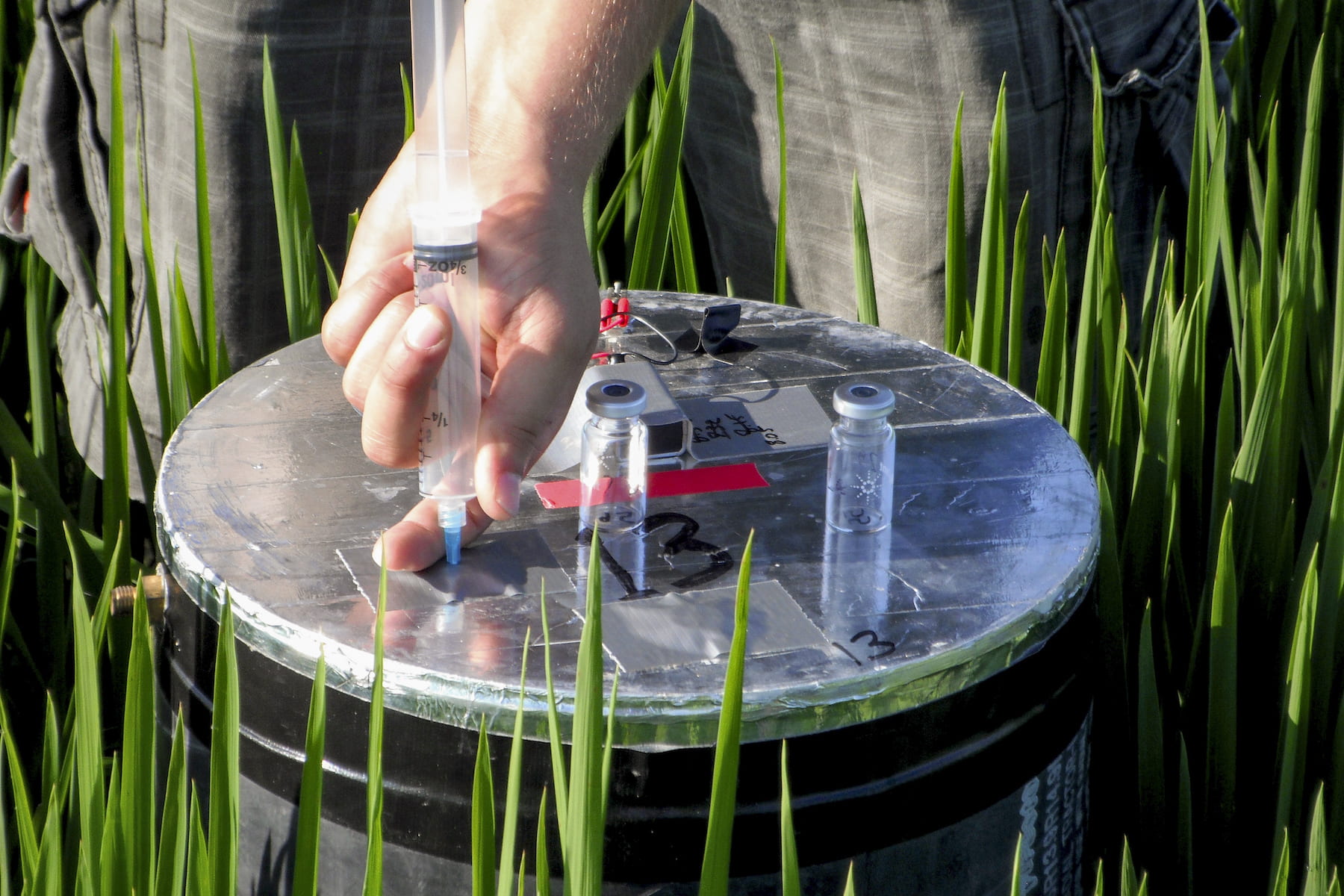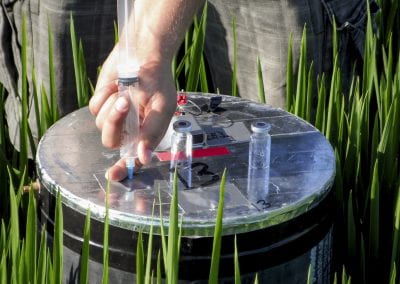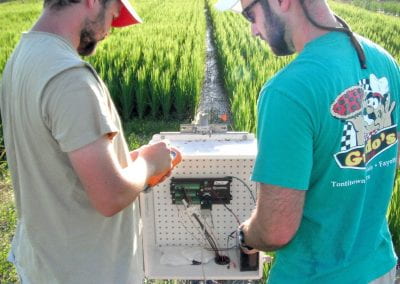Fertilizer Decisions Affect Methane Released from Soil
The Problem
Greenhouse gases are a byproduct of modern life, including farming. While only a small fraction of greenhouse gases are attributed to agriculture, research can help producers make informed decisions when it comes to fertilizer use.
The Research
In his work quantifying some of the variables involved in methane production in rice growth, Arkansas Agricultural Experiment Station researcher Kris Brye found that fields fertilized with ammonium sulfate emitted significantly less methane than those fertilized with urea or pelletized poultry litter.
Brye, professor of applied soil physics and pedology in the department of crop, soil, and environmental sciences, also found that the difference in methane emission made by fertilizer choice in rice production was significantly greater in silt loam soils than in clay soils.
The difference came down to microorganisms known as “methanogens,” which feed on carbon and produce methane. These organisms prefer the anaerobic brought on by flood conditions – as is found in rice production.
Brye’s research continues to examine how rice management practices such as tillage, urease inhibitors and irrigation systems interact with and influence the production of methane and other greenhouse gases. Understanding these interactions is needed to assess which farming practices generate the least greenhouse gas.
The Bottom Line
As growers work to make farming both profitable and sustainable, Division of Agriculture researchers are working to give them the best information to help them do both.
The Researcher

Kris Brye
Professor of Applied Soil Physics and Pedology in the Department of Crop, Soil and Environmental Science since 2009.
Brye earned a bachelor of science degree in soil science at the University of Wisconsin-Stevens Point in 1995, and his master’s and doctorate degrees in soil science at the University of Wisconsin-Madison in 1997 and 1999, respectively. He has taught at the University of Arkansas since 2001.
Research interests include tension-lysimetry, solute leaching, groundwater contamination issues and more.
»



